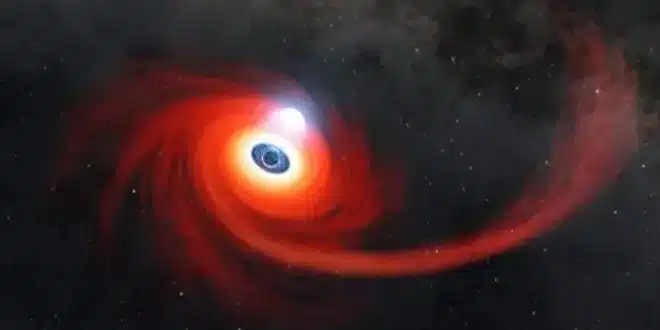Astronomers have identified the most luminous object known in the universe: a voracious black hole that consumes a sun-sized amount of gas daily. This discovery was made by researchers at the Australian National University using the European Southern Observatory’s Very Large Telescope. The quasar, which is the celestial phenomenon in question, has a mass equivalent to 17 billion Suns and shines 500 trillion times brighter than the Sun. Quasars are among the most energetic and distant objects, powered by supermassive black holes up to 10 billion times the Sun’s mass.
The black hole in focus is expanding at an unprecedented rate, engulfing materials close to its event horizon. Scientists estimate it’s accumulating mass at a rate of 370 Suns per year, effectively consuming the equivalent of one Sun every day. Christian Wolf, the lead author from ANU, highlighted the significance of this quasar, J0529-4351, as the fastest-growing black hole observed to date and the brightest object in the universe.
Previously mistaken for a star, this quasar was initially spotted in the 1980s but only correctly identified after recent observations in Australia and Chile. It is so distant that its light has taken over 12 billion years to reach Earth, with the universe’s age currently estimated at around 13.8 billion years, though some reports suggest it might be as old as 26.7 billion years.
Quasars, located at the centers of galaxies, are supermassive black holes that pull in surrounding matter with their massive gravitational force, emitting vast amounts of radiation and high-energy particles. A study monitoring over 190 quasars for two decades found that time seemed to pass more slowly in the early universe, with fluctuations observed today occurring five times slower in ancient quasars, reflecting a fascinating aspect of the universe’s early state.


